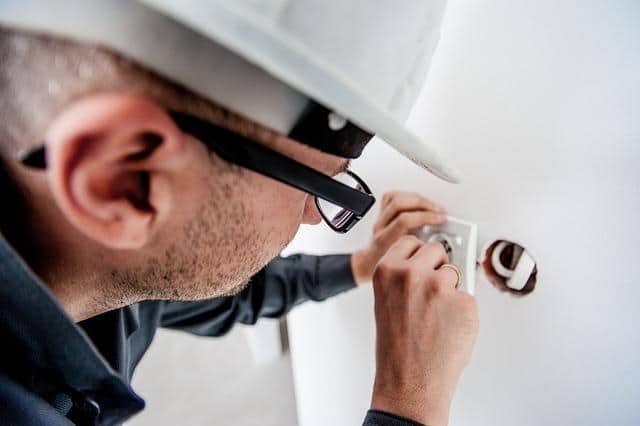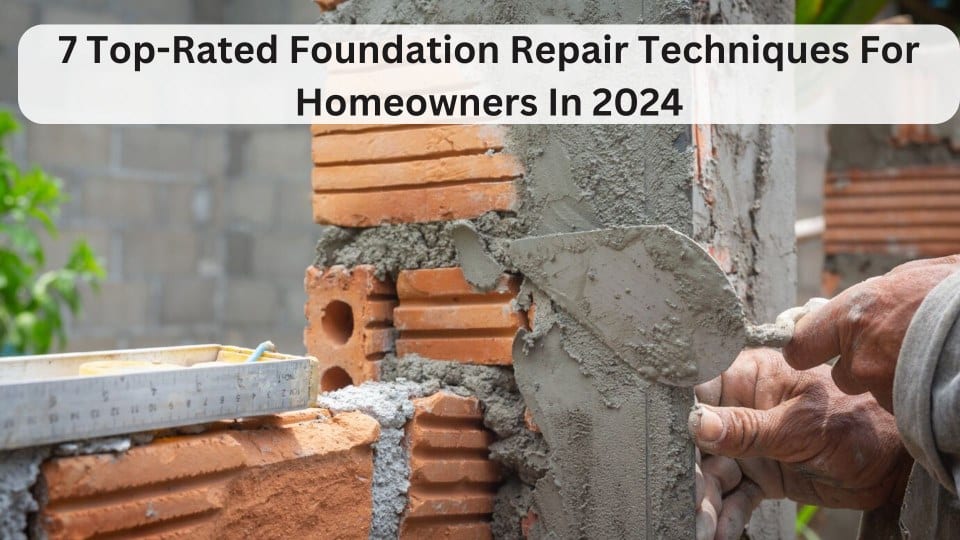The secret to a strong and durable structure lies in the stability of its foundation.
A study examining the causes of building collapse in the United States cited structural defects as a common denominator. Since a house’s foundation is the cornerstone of its stability, more emphasis should be placed on this area while undertaking routine home renovations.
Fortunately, there are several repair methods you can explore to prop up your property’s foundation.
Read below for the top-rated foundation repair techniques every homeowner should consider in 2024 (and beyond).
1. Steel Piers

Steel piers are one of the most recommended foundation repair techniques, and it’s easy to see why.
Steel is remarkably durable. When used on foundations, the material can preserve your home’s structural integrity for up to 150 years.
Another reason many home renovation experts recommend steel piers for foundation repair in Philadelphia is due to the metal’s strength. Steel can support the weight of heavy structures, making it particularly effective for multi-story buildings.
The only major drawback to steel piers is that they’re quite costly and require extensive excavation to install. But once installed in your foundation, you may never have to undertake significant foundation repairs for the rest of your life.
2. Helical Piers
Helical piers are most suitable for homes constructed on sandy soil. They’re also ideal where the bedrock around your property is too deep to sink steel piers to the required depth.
Unlike regular steel piers, helical piers utilize helix-shaped steel. The helices are designed to drive your home’s beams deeper into the soil, providing optimal stability for the property.
Although your home may not be anchored in the bedrock, the beams remain well-grounded, thanks to the screw-shaped design of the helical piers.
Note that helical piers can be challenging to install. Besides, this foundation repair technique is unsuitable for horizontal foundation issues. It’s imperative to consult deeply with a foundation repair expert before opting for helical piers.
3. Poured Concrete Piers
If much of the damage to your home’s foundation occurs horizontally, then this might be the best repair solution to explore.
Poured concrete piers are also excellent, as soil dynamics are a primary cause of foundation issues. The piers are typically tailored to suit both your home’s soil type and the property’s foundation depth.
Repairing your foundation with poured concrete piers delivers long-lasting benefits, regardless of your property’s soil type. The fact that these piers typically extend beneath the frost table prevents structural issues caused by soil movements.
However, like steel and helical piers, poured concrete piers require extensive excavation. This foundation repair method is labor-intensive when you factor in preliminary works like digging, drilling, and debris removal.

4. Concrete Piles
Not to be confused with poured concrete piers, concrete piles are a distinct foundation repair method that involves reinforcing your home’s foundation using pre-cured concrete. The concrete is usually block- or cylinder-shaped.
One noteworthy benefit of concrete piles is that they come in different sizes. The blocks vary in length, width, and thickness, depending on the depth of the intended use area.
Concrete piles are easier to install than the first three foundation repair techniques we’ve discussed above. Using a hydraulic jack, your contractor would typically place the concrete blocks underneath compacted soil and drive them down to the desired depth.
Installing concrete piles is both less labor- and capital-intensive. However, the soil dynamics in your home will determine the suitability of this foundation repair method.
5. Shimming
Shimming is a minor foundation repair technique commonly used in homes where the soil may have shifted or eroded.
Perhaps your house was constructed on ground that had not sufficiently compacted before the foundation was built. In that case, the gradual compaction of the ground may cause the soil around your house to shift, creating gaps between the property’s foundation and the rest of its structure.
Now, there may be several signs that your basement requires waterproofing. Most basement damages emanate from foundation gaps.
Fortunately, gaps created by late ground compaction are usually not a major cause for concern. A foundation repair technician may quickly repair the gaps by filling them with steel shims. The shims should immediately restore your home’s stability.
If gaps reemerge soon after sealing, issues are deeper than those caused by late compaction.

6. Slab Jacking
Slab jacking is another less intensive foundation repair technique that you may use to restabilize your home’s structure. The method involves drilling through an existing concrete slab and injecting concrete slurry into the drilled holes.
Slab jacking works best for homes that rest on concrete slabs, whose foundations may have destabilized over time. The weakness is usually due to soil shifts, erosion, or cracks.
Most home renovation experts suggest slab jacking for sagging driveways, sidewalks, and garage floors. However, the technique may work just fine for failing foundations and moisture-damaged basements, particularly if the faults emerge in localized sections of the foundation.
Just be sure to engage a foundation repair expert before settling for slab jacking. In case of severe structural issues, the technician may recommend heavy-duty repair techniques.
7. Spot Piers
The last foundation repair method on this list is ideal for light-loaded areas of a house, particularly an outdoor porch or attached patio.
In this method, a foundation repair technician would start by hand-digging your home’s foundation, targeting the vulnerable areas. The professional would then insert concrete supports to address the problematic areas and restore your property’s stability.
Spot piers are considerably less labor- and capital-intensive. However, the scope of work would depend on any barriers a professional encounters while digging the foundation.
For that reason, it’s prudent to keep trees further from your foundation. Not only is it challenging to dig through a network of established tree roots. Trees can also absorb significant water, adversely impacting the soil around your house’s foundation.
How Basement Waterproofing Scientists Might Help
Foundation damage can deal a massive blow to your property’s structural integrity. Therefore, timely intervention is paramount.
Basement Waterproofing Scientists are a household name in the home renovation industry. We specialize in wall, basement, and foundation repair.
When you contact Basement Waterproofing Scientists, we’ll dispatch a team of experts to your property to probe the extent of foundation damage. Our technicians will deploy the latest scanning technology to uncover the underlying issues with your foundation and then recommend the best of the above-listed repair techniques.

Summary
While there’s a plethora of foundation repair methods to experiment with, the ultimate pick depends on the severity of the foundation damage, the ambient soil conditions, and your home renovation budget. That simply implies, a foundation repair technique that works for an adjacent property may not necessarily work for you.
The trick is to enlist professional assistance for all your foundation repair needs. The technician will visit your property, assess the nature and scope of the damage, and then prescribe the most viable repair technique.


